With a career spanning over four decades, Dewey Franklin’s artwork has achieved popularity in London, Paris, and Los Angeles. His work also adorns some of the finest custom scooters on the scene, and he is now one of the most sought after award-winning airbrush artists…
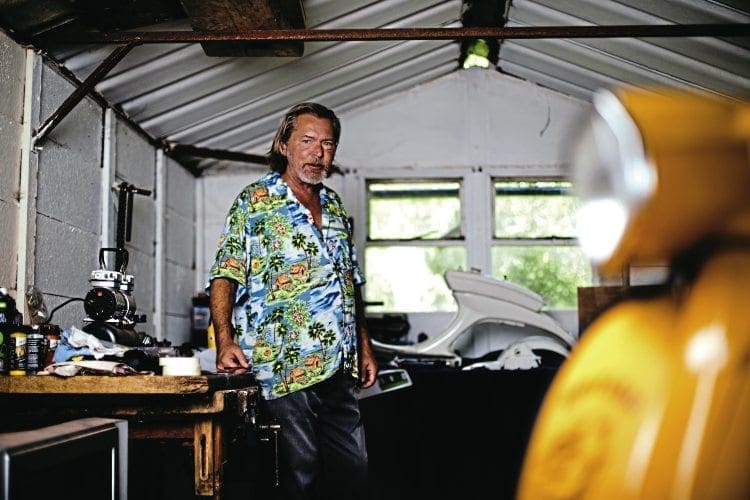
Dewey was born America, his father was an American serviceman in the US Air Force and his mother was from the UK. After spending the first 10 years of his life in the US, at the age of 10 Dewey and his parents moved to the UK.
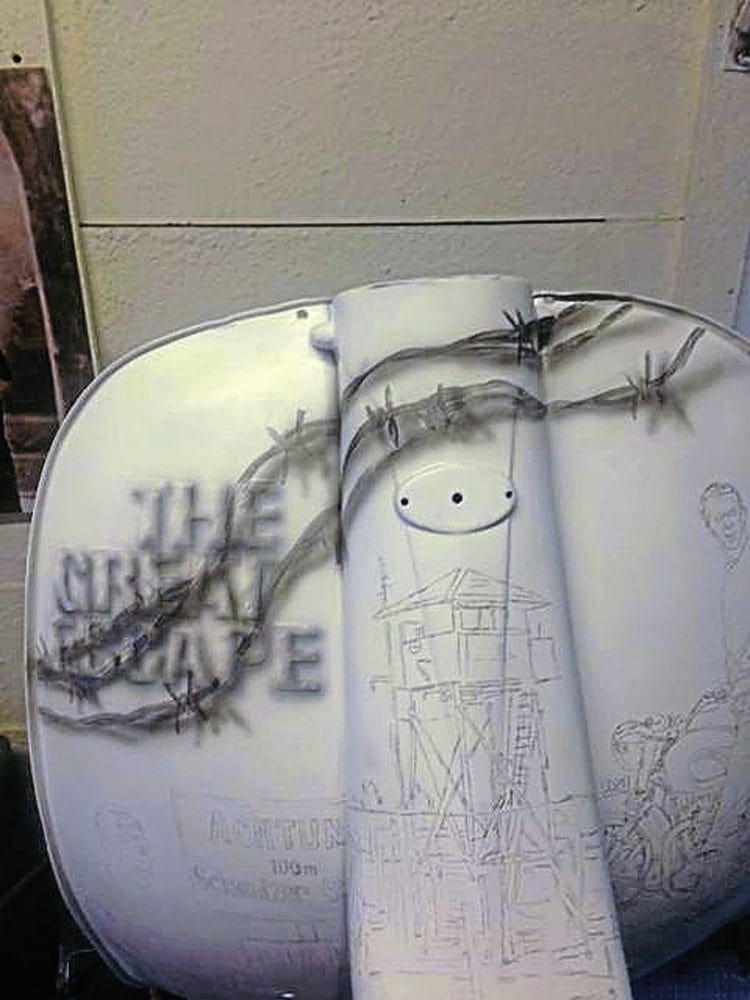
1: Building the art. 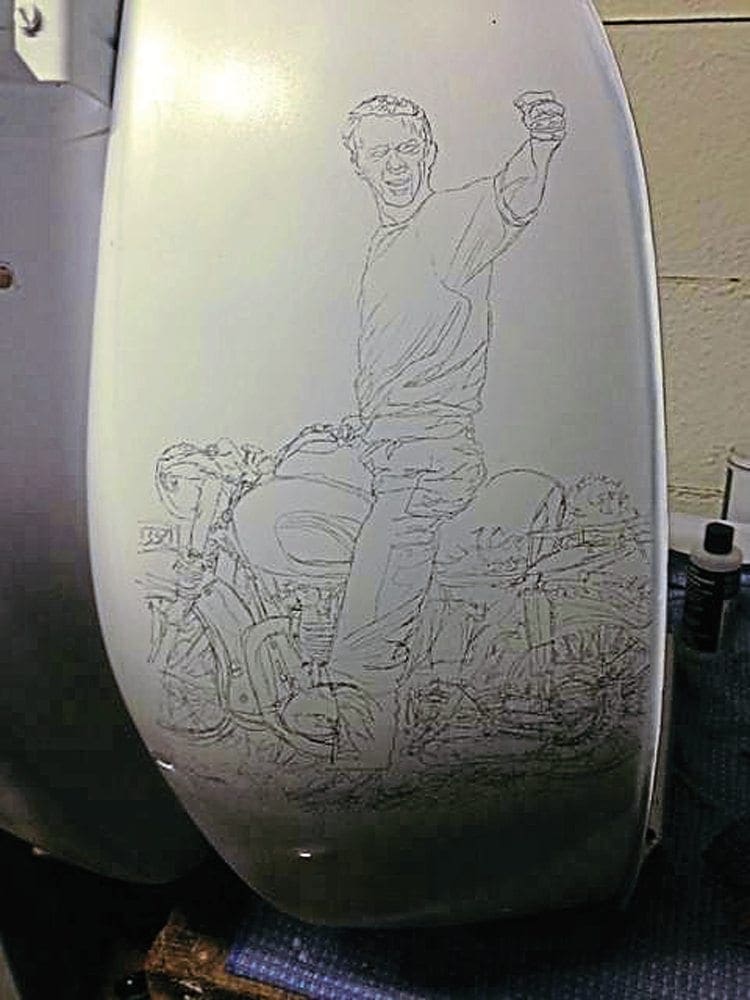
2: Commencing the portrait. 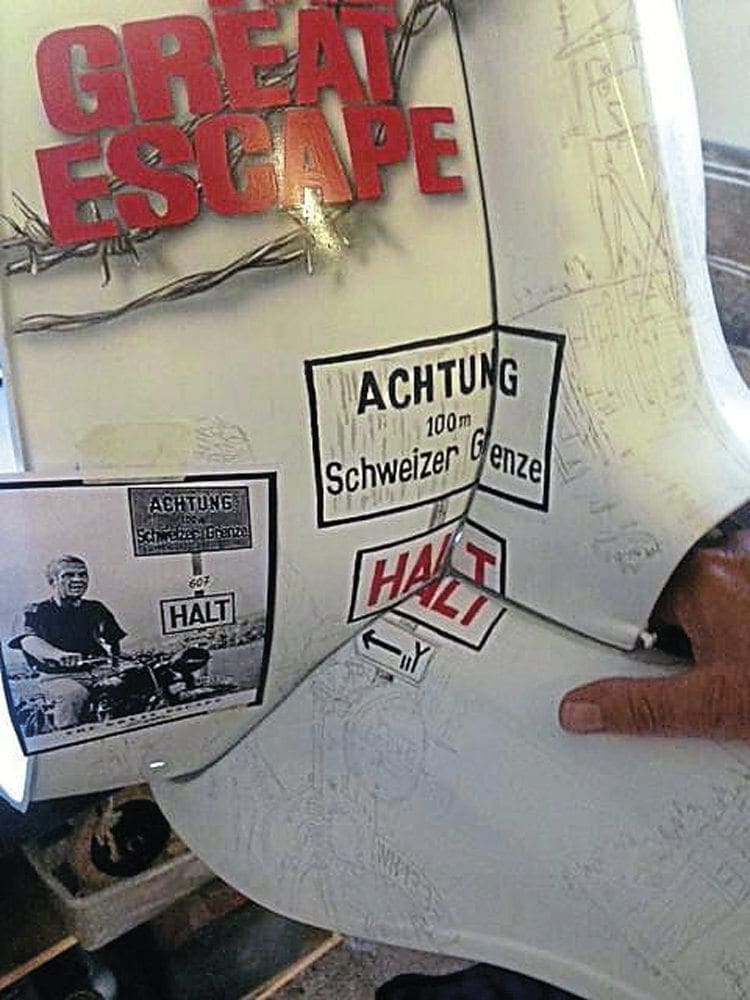
3: Developing the theme. 
4: Head-set top. 
5: Pictorial and graphic applications. 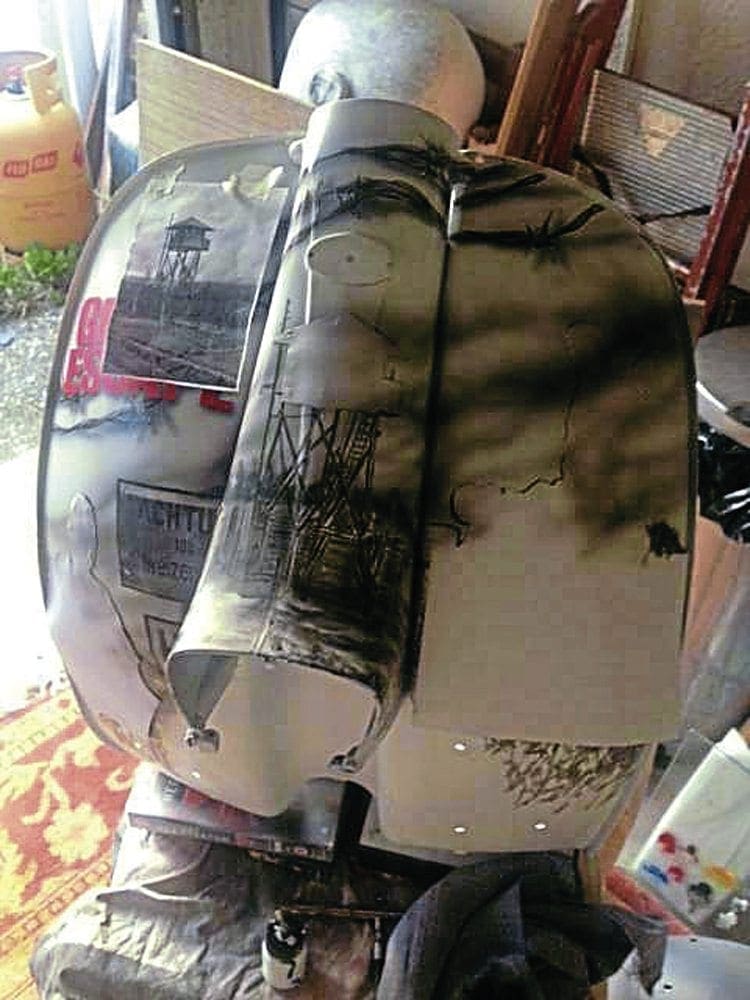
6: Work in progress.
Dewey later lived in France for 25 years and recently his landscape changed to the beaches of southern England in Worthing, West Sussex, where he and his 18-year-old daughter, Aurora Belle live.
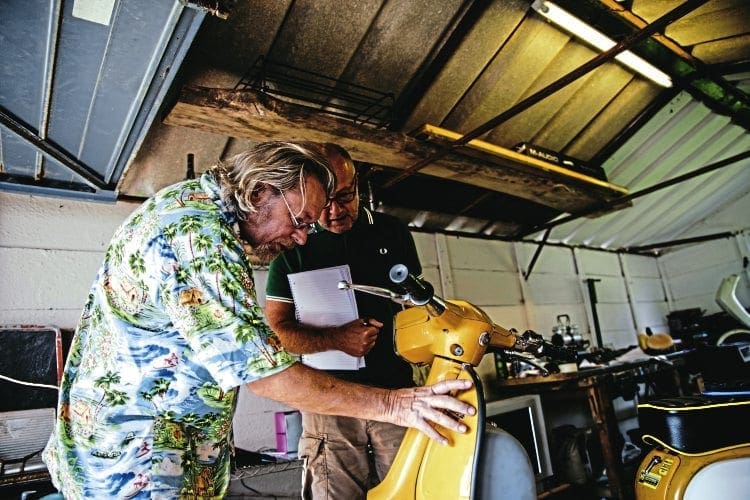
Credibility
Some of the fantastic custom scooters where Dewey has completed the artwork include: Steve Chapman’s ‘Another Man’s Cause’, Ray Stewart’s ‘Outlaw Ride’, Bob Bush’s ‘Great Escape’ and Bobby Ball’s ‘Eclipse’.
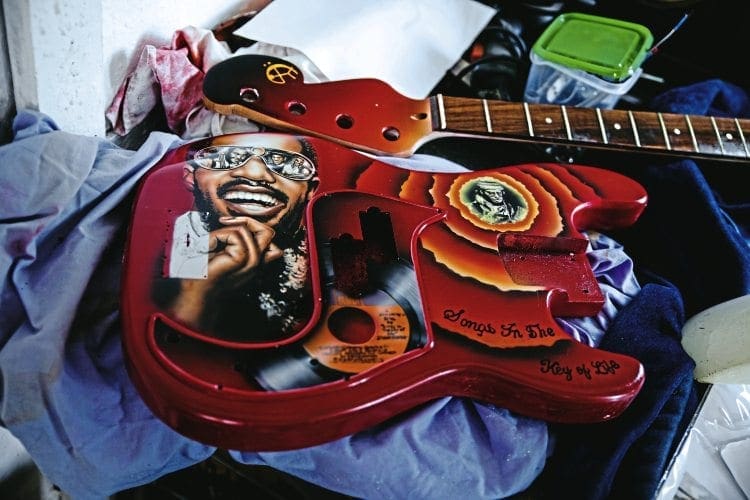
“My background gives me my strength, which is pictorial, but I’m sure all painters have a different story. About seven years ago I remembered how much fun airbrushing was and I’ve been concentrating on it ever since. Self-employed people like me do it out of love for the work and creating something special. Every single scooter I have gotten involved in, the customer wants a different theme, I take it and compose it, and try to make it a work of art,” Dewey explained.

Developing interpretations
I asked Dewey how he develops a concept from the ideas he receives from a customer, and how he turns that it into a reality: “I take the pictures I’m given and form a plan around them. I’ve usually got the plan for the scooter worked out on a sketch board, which is made up from images and ideas I’ve received from the customer. I then apply my own interpretations of how best to develop the images onto the bodywork of a scooter. Each job is different and that’s where, for me, the challenge and excitement lies. I love the work and the interaction with the paint and the bikes. After a bike leaves me, it’s over to the owner, it’s their property and their celebrity. I love it when I get to hear that they’ve won a trophy (or two) with their scooter or that it’s been featured in a magazine.”
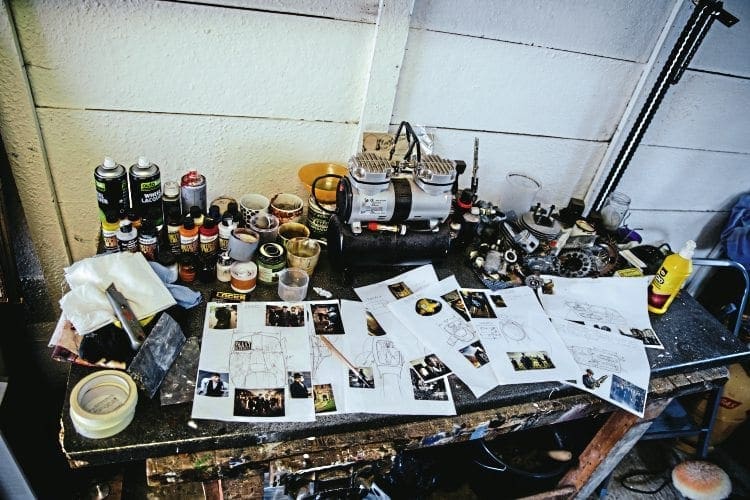
Passionate
Dewey explained that the most rewarding thing for him is that in his work and life he gets to do what he wants to do the most and he gets to do it every day. “With my hands and with my mind I get to help people realise their dreams. It doesn’t feel like a real job, it’s a pleasure to get up every day and have something to create. With every job I do, I take the opportunity to do the best work I have ever done.”
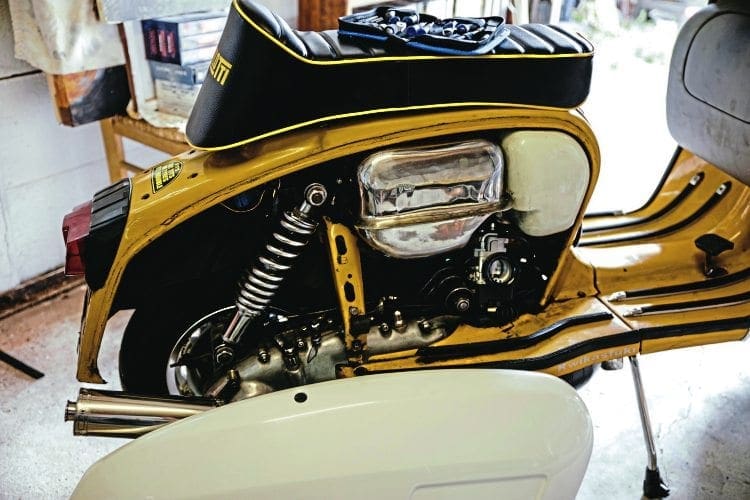
Magical
Dewey’s inspiration comes from his inner core. “With a scooter, the customer usually has a theme in mind and I can generally see the whole job painted in my head before I start. But when the actual painting starts happening and when the airbrush is in my hand inspiration happens, and sometimes some magical things appear, which I hadn’t planned on and sometimes I wasn’t ready for.”
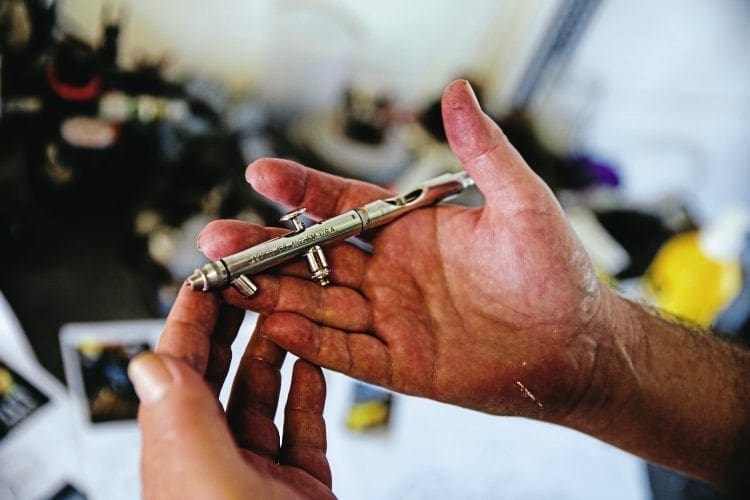
I asked Dewey: from his point of view, what is the critical element of a paint job? “Oh, I suppose that would be if it’s a theme that involves portraits of well-known people. For example, Steve McQueen, Charlie Chaplin, and Yoda! Anything from films or the media. The portrait has to be perfect. The quality of the portrait can make or break the rest of the artwork, luckily I spent many years doing portraits.”
Process
When a customer contacts Dewey with a project he discusses their ideas with them in detail. He establishes a mutual trust with the customer and ensures that the plans reflect what the customer has in mind. “I get as much information as I can about the state of the scooter and their vision of the theme. Then I make the plans to show them what my creation would be. This in itself can take hours to complete, getting a cohesive flow of where the pictures will be situated on the scooter. For instance, someone will describe the theme of the scooter. I’d first find the pictures from books, the internet, or taking stills from DVDs and print small copies of them all. I then work with hand-drawn templates of scooters on paper for these plans. I look at all the pictures and try to create a cohesive composition that fits together naturally (in a sort of chronological order if it’s a movie theme) and what will look best where and next to what. It is the same as creating a painting. I place the pictures on the templates with arrows and explanations to send to the customer. This is where we make changes and finalise the plans.
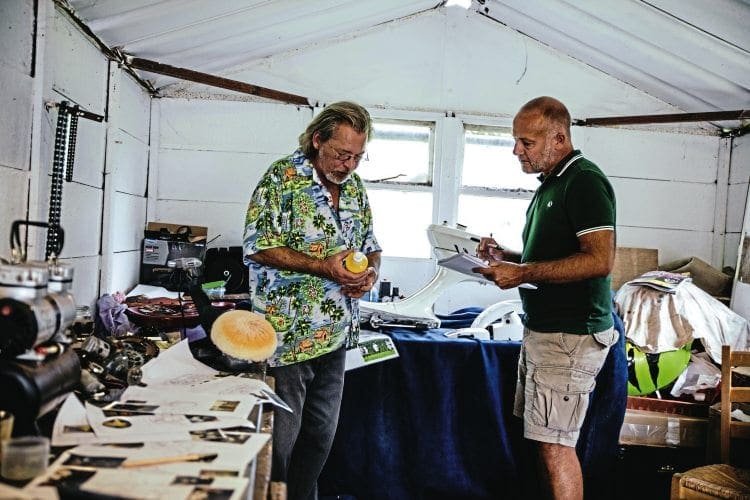
“I like to work closely with the customer, it’s just as much their idea and creation as mine, and the more communication, the better the job will be. At this stage, I can pretty much see it finished in my own head. When the scoot arrives I can see just how much work is involved, due to the state of it. Are there any dents? Is there any rust? Or is it in perfect condition? It can sometimes take a few weeks just to get a scooter into a paintable shape. I dismantle what I can and mask off what I am leaving untouched. I rub the whole thing down, wet and dry sand it and then apply a base colour. I print the agreed photos or do full size drawings and cut dozens of stencils to transfer all the drawings to the bike where they need to go. Blu-Tac is one of my favourite tools for sticking the stencils to the paintwork! I then start painting.

Materials. 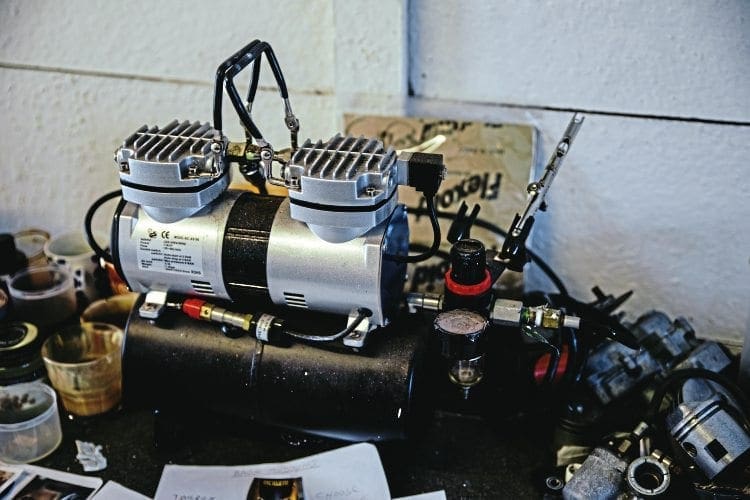
Tools of the trade.
“I’ll do some hand brushing where needed, and move onto airbrushing. If it’s very pictorial, I’ll use the same method I would with my oil paintings. That is, to paint the whole thing monochrome (black and white) to get my tones in (a ‘likeness’ if it’s a portrait) before I start adding the colours over that. I use Createx Auto Air Colours nowadays, they are water-base and work well for me. I use my trusty old Badger Anthem 155 airbrush with a universal tip. I know there are a lot more fancy airbrushes out there but this one works for me! So I complete the artwork, and if the customer wants I’m happy to do the varnishing. That’s a lot of work and you’ve got to be careful, you have to rub it down, fine-cut and polish up, and then put everything back together. That’s the whole process! A scooter takes about a month for full coverage artwork, as well as any work needing doing beforehand.”
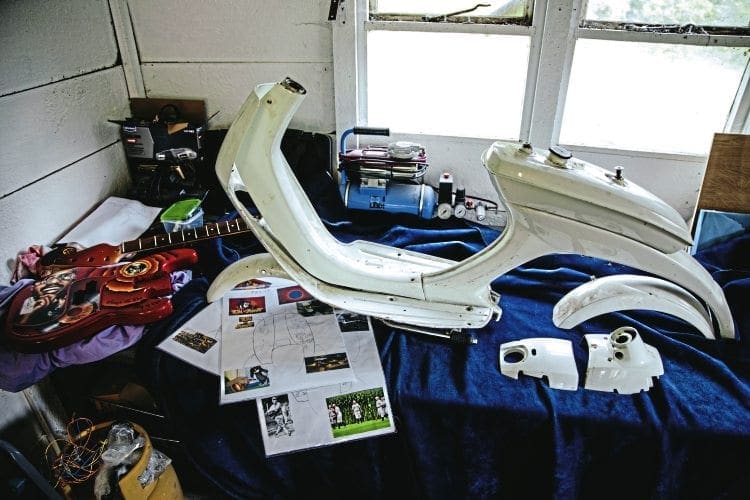
Blessed
Dewey Franklin is a true artist and painter; art and paint is his life and his job.
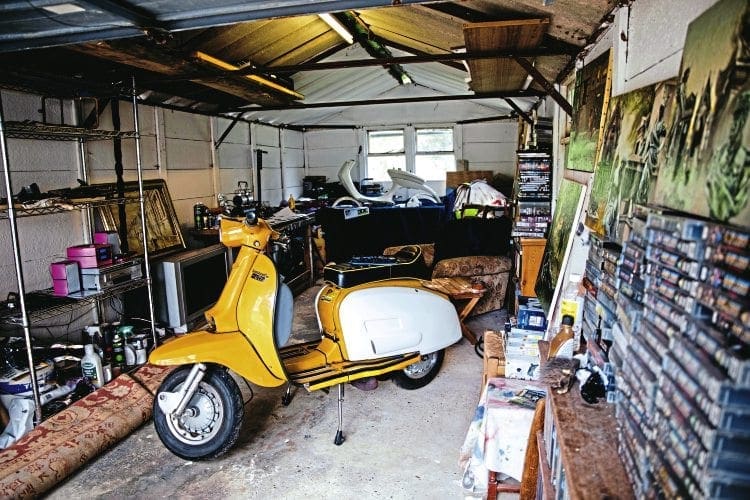
“Every job is different and every job is a blank canvas. A scooter has a lot of paintable space, which means a lot of scope to create a story, compose a theme, bring it together and make it a thing of beauty. To create something and to bring others pleasure in delivering that creation is a gift I give and I love giving it. I am so blessed to do what I love doing every day.”
Words: Stu Smith
Photographs: Gary Chapman



